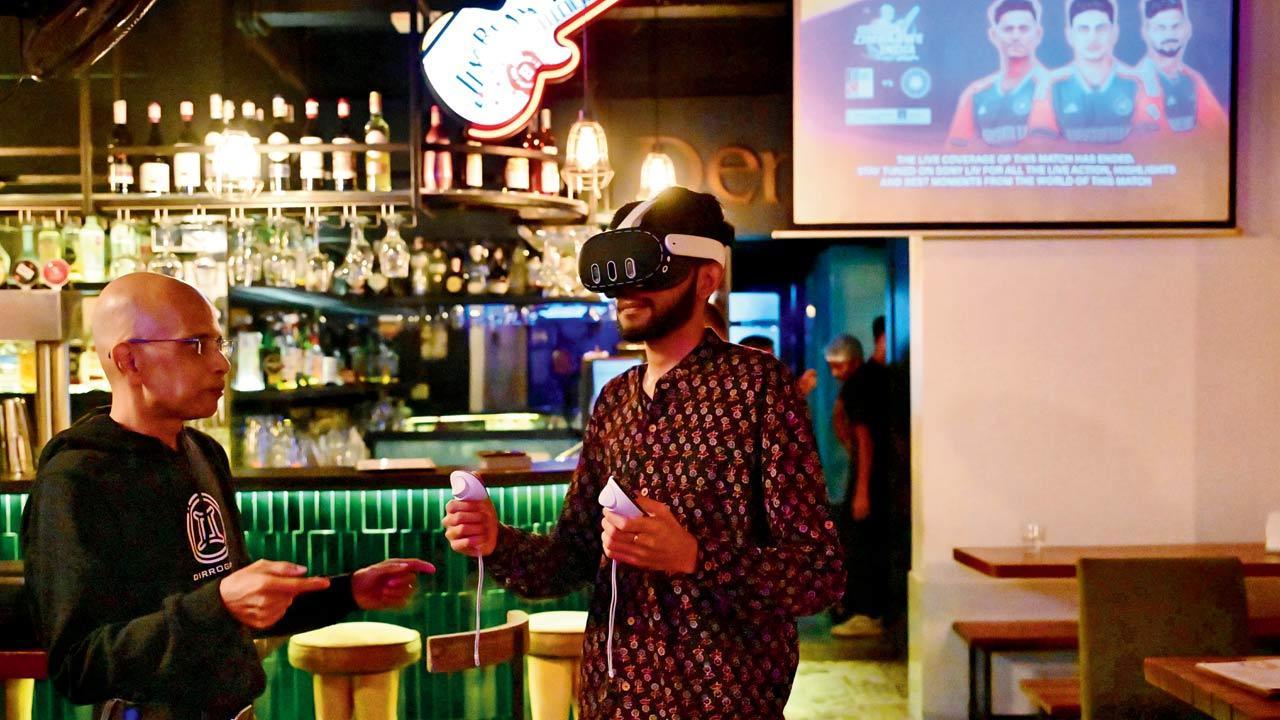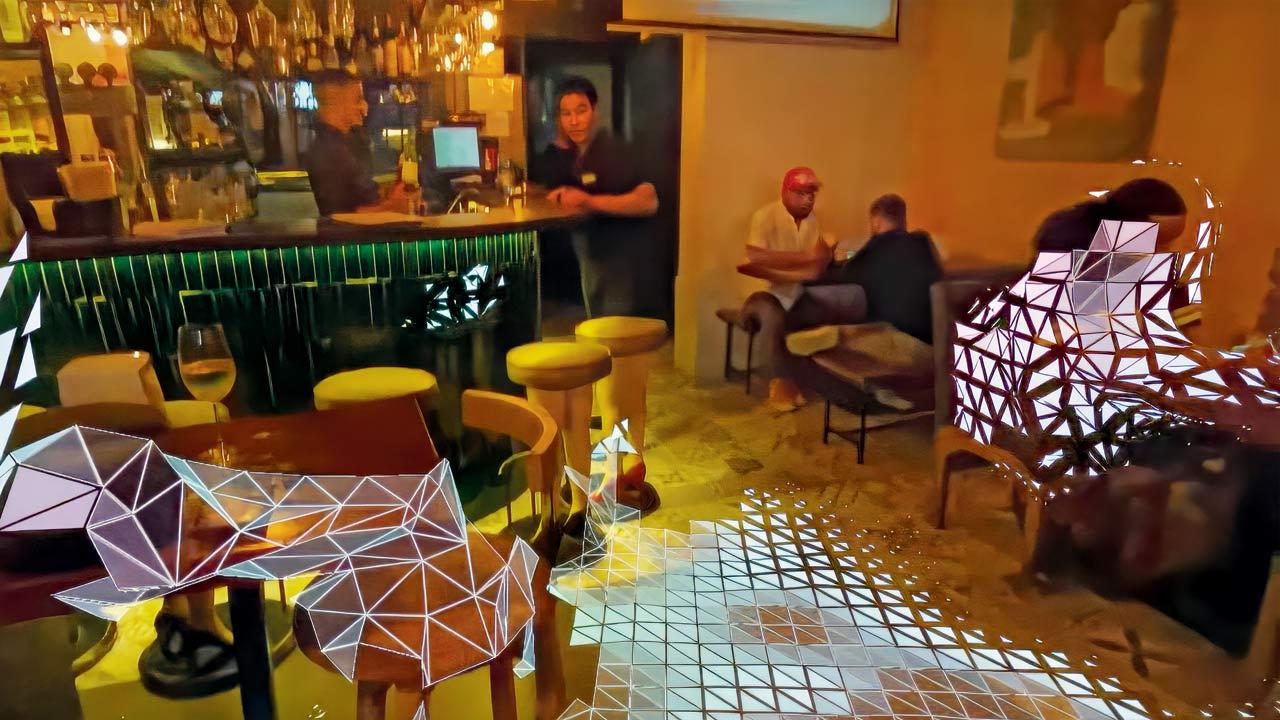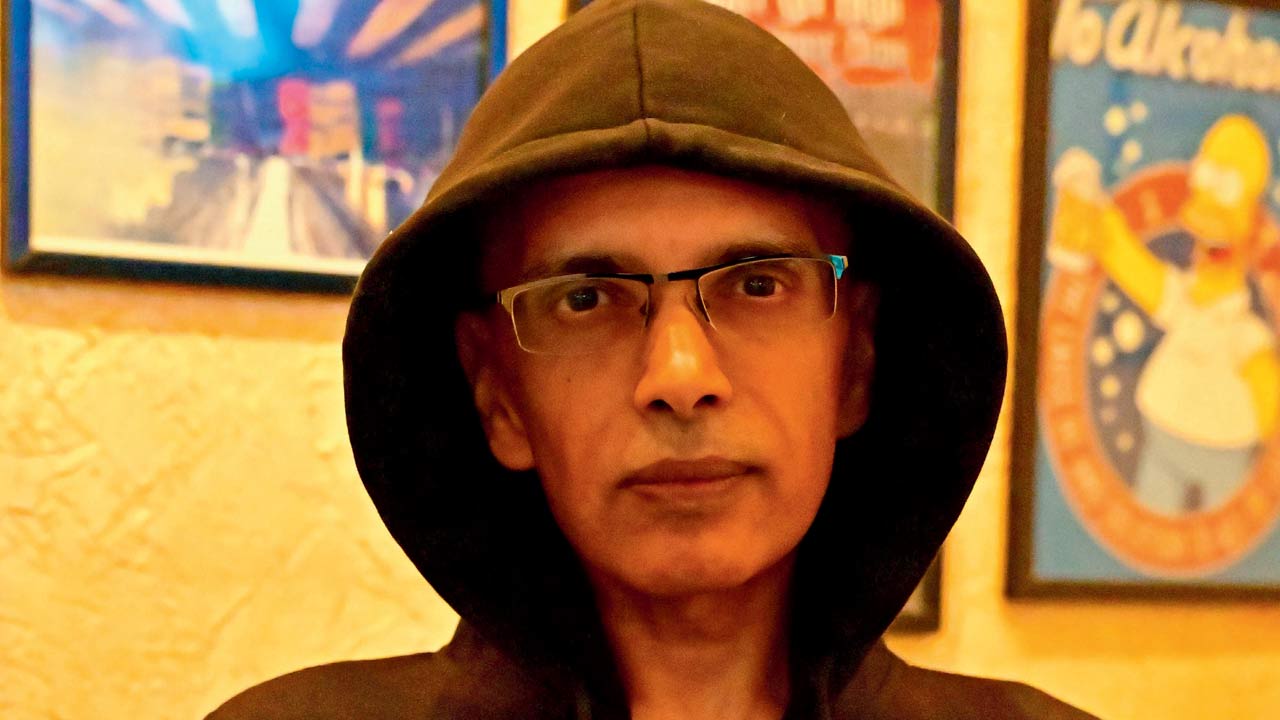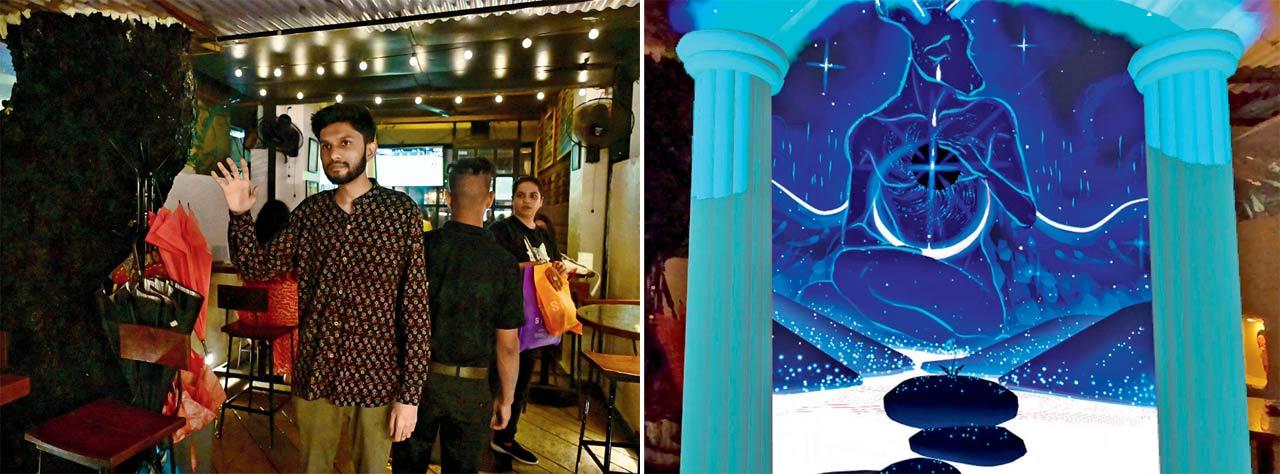A virtual partying experience aims to change the clubbing culture in the city with digital surrogates

Clyde D’Souza (left) explains the workings of the virtual experience with the writer
Stag entry or couple? The simple question that has irked party-goers in the city for decades, might soon be redundant. Picture this: You walk into a club. The place is dead. It’s an evening on a working day; you should have known. But instead of calling it a day, you slip on a VR headset. The club transforms into a city under the sea, and in the blink of an eye, your friends, in the form of ‘digital surrogates’, are now all here. To test this concept that city-based visual DJ Clyde D’Souza calls the future of clubbing, we head down to a Bandra haunt on a weekend.
ADVERTISEMENT
 The venue is scanned using the headset to identify surfaces and objects
The venue is scanned using the headset to identify surfaces and objects
The set-up behind this complex sounding idea is a simple VR headset and two handheld controllers that act as motion sensors for your arms. The magic lies in the process. With the headset on, D’Souza first walks around the space. This allows an AI assisted model to identify the walls, corners and the roof of the compact pub. With the space mapped out, it’s time for a makeover.
 Clyde D’Souza
Clyde D’Souza
A whole new world
When we finally wear the lightweight headset that straps on like a pair of swimming goggles, we see the venue as it is, almost as if the headset were see-through. It’s only when we turn towards the windows that we’re treated to a view of a vibrant fish and coral life thriving outside. At the other end of the venue, the entrance of the club has been transformed into the pearly gates. Given the increasing monotony of spaces in the city, we’re already sold on this idea.
 A mystical gate placed at the entrance of the club welcomes the user wearing the headset to the virtual experience
A mystical gate placed at the entrance of the club welcomes the user wearing the headset to the virtual experience
But for D’Souza, the key lies in dirrogates, digital humans that you’ll find inhabiting this new world. He explains that these characters can work two ways. “Imagine I had a friend who wanted to join us from home. By donning a headset from home and logging into the venue, he could send a dirrogate that we would see on our headsets here. In turn, he’d see us in real time as well.” How the character moves and interacts is dictated by motion sensing sensors on the headset and two handheld controllers.
 An empty wall at the venue turns into an underwater window inside the experience
An empty wall at the venue turns into an underwater window inside the experience
But how do three sensors let you control a character in its entirety? D’Souza reveals that an AI model uses predictive technology to draw assumptions about the parts of your body that are not tracked. “For instance, if you stick your hands out, the model reads it and refers to human skeletal capabilities. This way, even though your shoulders weren’t tracked actively, they move in a very human way.”
Looking ahead
It’s the second-use case, however, that catches our attention. For those days where you have last-minute apprehensions about heading out to party, the dirrogates come in even handier. You can simply log in to the venue from your home and leave your set-up alone. A Work-From-Home kind of option for party-goers, if you will. “Based on your previous activities and moves, the dirrogate constantly learns your ‘style’. When left alone without inputs, it mimics these mannerisms,” he explains.
 The virtual characters, aka dirrogates, appear in the space next to individuals at the venue. Pics/Shadab Khan
The virtual characters, aka dirrogates, appear in the space next to individuals at the venue. Pics/Shadab Khan
While the in-experience visuals might not look realistic, and the animated characters felt almost cartoonish at times to us, the creator notes that it’s a matter of time before things get more realistic. “We’re still in the nascent stages. I have been pushing for this technology to be used in clubs across the city to get more inputs from diverse audiences. It’s only through mass adoption that things can get better,” he shares. Built using game designing platforms Unreal and Unity, that allow creators like D’Souza build 3D environments, the Andheri resident is now in talks with some familiar tech giants to help push the concept to a larger audience.
What’s holding venues back from embracing the idea? The expenses involved, we learn. With each set-up costing nearly R40,000, D’Souza believes club owners have little incentive to make the gamble at this early stage. When we ask the owner of the Bandra haunt we’re in, he agrees. “We recently did a test run of the concept where we had three headsets that were passed around the club on a packed night. This isn’t the kind of innovation that you come across often. The crowd was all for it. If the headsets were to get cheaper, I can see exclusive events taking off, at least at my venue,” he states.
“I’m working on making it affordable by porting the same experience to Indian-made headsets. The only problem is that there aren’t any sturdy ones in the market today. I am in talks with a few Indian brands to see if we can work something out,” he reveals. Partying with VR headsets on might seem impractical for some, or unnecessary for others. The visual DJ who has been spinning tunes in the city since the ’90s believes otherwise. “There was a time when screens in a club were unheard of in Mumbai. Today, you can’t find a club that doesn’t run visuals if you tried to. It’s a question of when, and not if, when it comes to a concept as novel as this. The party has just begun,” he says.
Log on to @dirrogate
What is it? Dirrogates are AI-powered virtual characters that resemble their owners and can join real-life parties around the world on their behalf.
How it works? A blend of AI and VR technologies, using headsets and sensors, enables dirrogates to be present at venues with their friends.
Who it affects/benefits? For regular club-goers, it can provide a visually enhanced experience and for homebodies, a way to join real-life parties remotely without physically being at the venue.
 Subscribe today by clicking the link and stay updated with the latest news!" Click here!
Subscribe today by clicking the link and stay updated with the latest news!" Click here!







